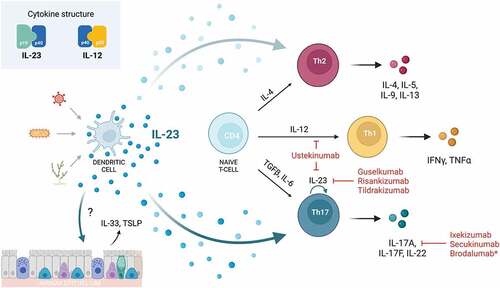Figures & data
Table 1. FDA-approved monoclonal antibody therapies targeting the IL-23/Th17 axis.
Figure 1. Mechanisms of IL-23 signaling and IL-23/Th-17 blockade on T-cell-mediated inflammation. This figure illustrates proposed mechanisms by which IL-23 amplifies Th2- and Th17-mediated inflammation. In response to antigen stimulation, antigen presenting cells such as dendritic cells secrete IL-23, which primarily acts on Th17 cells to potentiate Th17 cell proliferation and function, thereby enhancing neutrophilic inflammation. It may also act on airway epithelium to increase secretion of alarmins, IL-33 and TSLP, which act on ILC2s to amplify the Th2 response. This may provide a pathway by which IL-23 increases eosinophilic inflammation, which is seen both clinically and in animal models. Created with BioRender.com.

